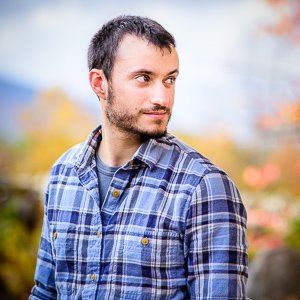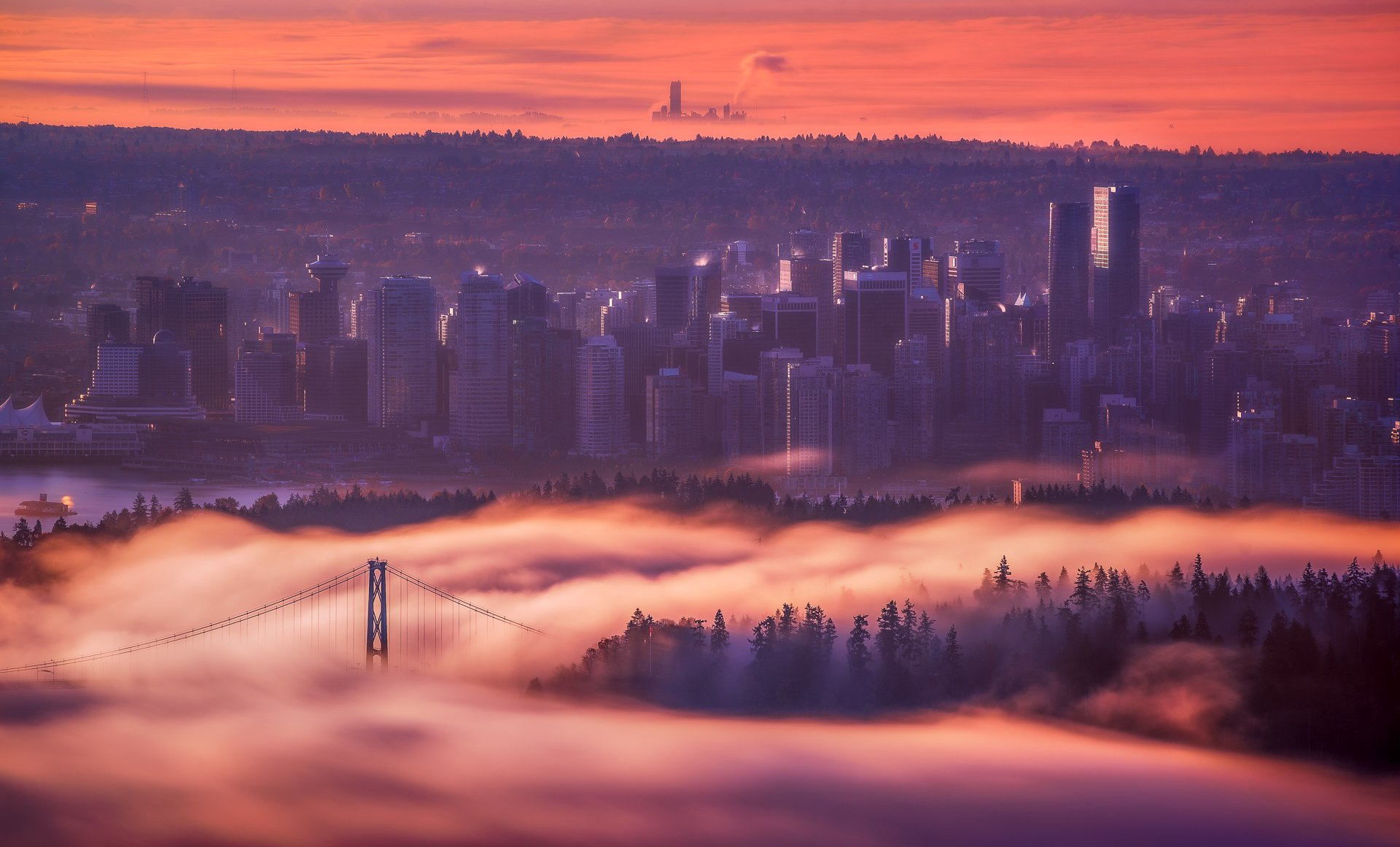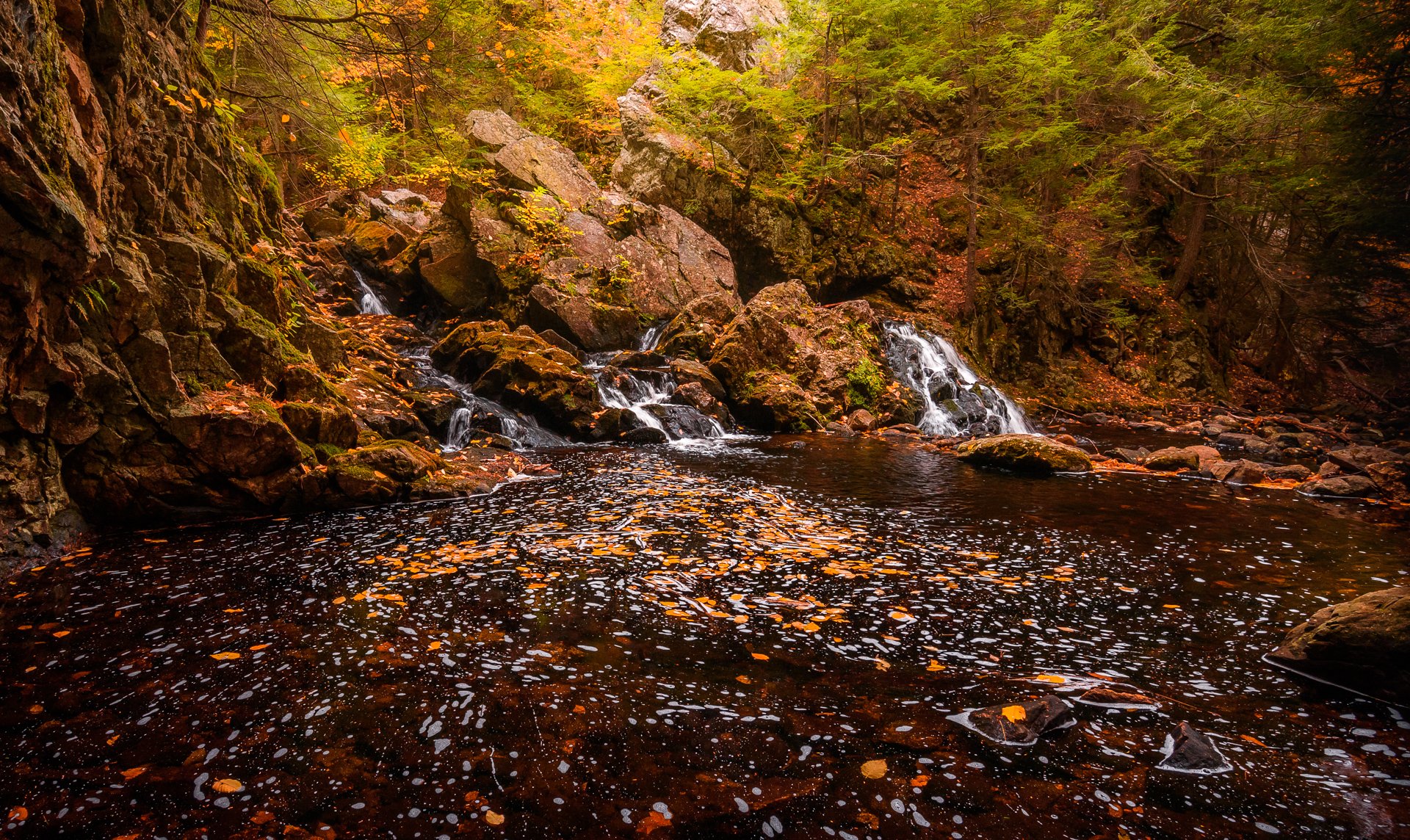Hey Photofeeders! This week we have a new installment of series that we will be doing, where we interview photographers about a specific style of photography. This week we are honored to feature the one and only @derekkind, who has been kind enough to explain a little bit about long-exposure landscape photography (we will have another installment where we tackle astrophotography, so we will focus on long-exposure shots during daylight hours). Derek has been using Photofeed since the inception and has been featured numerous times because of his gorgeous and dynamic landscape shots.
Photofeed: Derek, thanks so much for agreeing to do an interview with us! To help the community get a little background info on you, can you tell us a little bit about yourself? We know you’re Canadian, but where did you grow up? Do you still live in the same area? And since you’re Canadian, we assume you like hockey. What’s your favorite team?

Derek Kind: Thank you so much for having me, @photofeed. I really appreciate what you guys are doing here on Steemit for photographers like me, and I couldn't be more supportive of your project!
That's right, I'm a proud Canadian! I grew up in a small town near the national capital: Ottawa, Ontario. I'm still here, and yes, of course I like hockey, and have supported the Ottawa Senators since watching their first game 26 years ago. I play hockey as well, but am better at photography, and the Sens are having a terrible year, so lets talk about photography instead, eh!
(photo by @jarvie)
PF: Can you tell us a little history about how you got started in photography, and what you do with it now? Is photography your full-time job?
DK: I've always enjoyed taking photos, but I trace my serious interest in photography back to the 2010 Winter Olympics in Vancouver. I was volunteering at the cross country, biathlon and ski jump facility in Whistler, and was able to get really close to the action and take photos of the athletes during the competitions – I saw the kinds of cameras the pro photographers were using and though “hmn, it would be nice to have one of those and be able to take better pictures.” Later that year I got my first DSLR and traveled to Iceland, officially kicking off a career in landscape photography.
A lot has happened since then: a second trip to Iceland, multiple trips to parts of Canada and the USA, adventures and successes on social media like Google Plus, meeting and hanging out with some amazing, inspiring photographers and connecting with photo friends around the world. I've experimented with different types of photography, including digital manipulations and conceptual selfies, but always comes back to landscape photography: I love to travel and take pictures of nature, day and night.
Unfortunately, it's a slow crawl towards making a living with landscape photography alone; recently I've been doing real estate photography to pay the bills and fund my travels. One way or another, I spend all of my time – almost all of my waking time, in fact, working and playing within the realm of photography.

(30 second exposure - morning fog in Vancouver)
PF: What are some of your favorite things to do, unrelated to photography?
DK: I enjoy eating and sleeping sometimes. I also like to read books. Reading is a means of letting the mind rest, escaping from everyday cares and responsibilities. I can always get lost in The Lord of the Rings, by J.R.R. Tolkien, or a good adventure story like Endurance, by Alfred Lansing. The truth is that while I have many interests outside of photography, I haven't been able to explore them in recent years.
.jpg)
(2 second exposure - Rosewall Provincial Park, British Columbia)
PF: We’ve loved seeing your fantastic work on Steemit and Photofeed. Your long-exposure landscapes are always gorgeous. We’ve been wanting to do interviews about certain styles for a while, and you’ve been churning out some gorgeous long-exposure photos. Can you tell us what the benefits are of doing a daylight long-exposure photo are compared to just a regular capture? Why do you enjoy doing them?
DK: Thank you! I love long-exposure photography: it's one of my favourite techniques, and I think the reason I love it so much is because of how a long-exposure can blur the lines between reality and fantasy. A snapshot, a short exposure, shows time in a single moment, which is similar to how our own eyes percieve the world, but a long-exposure that captures a few seconds or even a few minutes of time reveals that which our eyes cannot see and gives the photo a surreal feel, even though it IS real. The effect can be subtle, like making a waterfall silky-smooth, or it can be very obvious (in the case of startrails). Either way, long-exposures are a way of observing our world on a different time scale than the one humans are tied to.
Here are two photos of the same scene (from Pittsburgh). Can you see how the long-exposure changes the mood?
PF: Yes! It is awesome how much more dramatic the long-exposure shot is, compared to its counterpart. Would you mind telling us a little bit about the workflow behind the long-exposure technique? What equipment do you need?
DK: The difficulty in making long-exposures during the daytime is that little thing in the sky called the Sun, and the astonishing amount of light it produces. If it's a dark day and you're in the shade photographing a waterfall and you stop your lens down to f/22, you may be able to use a shutter speed of 1 second or more without blowing out the highlights, but in most cases you will need a filter to reduce the amount of light entering the lens. A circular polarizer will often darken an image by one or two stops, but my favourite tool is a ten-stop neutral density filter. Neutral density filters are essentially sunglasses for your lens – good ND filters block a lot of light without distorting or discolouring the image, allowing you to make a longer exposure during the daytime, without resorting to a narrow aperture.
My favourite ND filter also happens to be one of the cheapest. It's by a brand called ICE that you can find on Amazon. I prefer it over my more expensive B+W filter:
https://www.amazon.com/ND1000-Filter-Neutral-Density-Optical/dp/B00GMXD9E8/
Of course you will also need to keep the camera in one place during the long exposure, with a good tripod, or a beanbag or some other immobilizating arrangement. Handholding won't do!
PF: What are some things photographers should take into account when doing a long-exposure shot? Are there any “rules” that are different, or any specific tips you have?
DK: Try to envision the motion in the scene before you take the picture. Look at your subjects: if there is water, notice how fast it flows and whether you want to blur it completely or keep some texture. If there are clouds, mark their speed and direction – the direction of movement will affect your composition. It's not easy to predict the effects of time, and the final result is often surprising, but it's helpful to start out with an educated guess before you waste a lot of time waiting for an exposure to finish.
One problem that you would never think about until it happens is light leak through the viewfinder. During a long-exposure, sunlight entering the viewfinder can bounce around and leak onto the sensor, producing streaks or overall loss of contrast in the photo. This gets worse when the sunlight is bright and direct, but can happen at any time in the day (or at night if you shine a flashlight towards the back of the camera). Here are two (extreme) examples:
Many cameras come with a little black viewfinder cap (“so that's what that's for”), and others, like the Nikon D850, have a built-in shutter for blocking the viewfinder. But you don't need a high-tech solution for this problem: just drape a hat or a shirt over the back of the camera.
PF: When it comes to editing, do you have any tips for long-exposure shots?
DK: Fundamentally, there is no difference between editing long or short exposures, but there are a couple of things to keep in mind: depending on the filter you use, there may be colour casting: a bluish or orange tinge, usually correctable with simple white balance adjustments; also, long-exposures tend to be softer, so you might consider sharpening more than you normally would.
On the subjective side of things, because long-exposures can turn a relatively “normal” scene into a dreamy, surreal one, I like to emphasize this feeling with moody colours and dramatic contrast:
PF: What’s one of your favorite long-exposure photos you’ve ever taken? Can you tell us a little backstory on it?
DK: This is one of my favourites because of the way the long-exposure revealed a pattern that would be impossible to see otherwise:
It was at a place called Bear's Den Falls, in Massachusetts, and I noticed there was a slow current beneath the little cascade, moving the leaves lazily around in a circle. I put on the 10-stop filter and polarizer, let the camera expose for 59 seconds, and voilà, a magic vortex appeared! I've tried the technique in a few different places (and I'm not the first person to do this), but the Bear's Den Vortex is far and away my favourite leaf-swirl.
For reference, here is what the leaves look like without the long-exposure:

PF: Incredible stuff! It’s amazing how the long-exposure can change not only the look and feel of the image, but the subject matter itself. Are there other examples of your long-exposure photography you would like to share?
DK: Sure! I'll share more of my favourites here, along with a few words about each.
^ This was at the Portland Head Light in Portland, Maine. Fifteen seconds turned out to be the optimal exposure time to blur the waves that were breaking over the foreground rocks. I just love that silky smooth water!
^ Icelandic icebergs in the glacial lagoon known as Jökulsárlón. This was an interesting one because icebergs move around a lot - I was lucky to capture a few that were stuck. I liked the contrast between the stationary bergs and the blurred water and clouds (120 seconds).
^ Niagara Falls, Ontario. Only 0.7 seconds....but because of the speed and the power of the falls, it was long enough to polish out the details in the water, leaving a smooth texture.
^ More water! Are you sensing a theme? I do like photographing waterfalls. This photo was 58 seconds long, at the Lower Lewis River Falls in Washington state.
^ Rush hour looks better when your shutter speed is 10 seconds...those cars aren't moving as fast as you think! This was taken during a sunset in Seattle, Washington.
^ Angels wings and the Washington monument in the heart of the American capital. Long-exposure makes stationary objects stand out, and is a good way of contrasting the timeless with the ephemeral (94 seconds).
PF: Those are great! It's interesting to see how long-exposure can be used in different ways, depending on the scene. Now, I’m sure a few of the readers (including us) are curious as to what your favorite camera and lens setup is. Also, if you only were able to have one lens for the rest of your life, what would you choose?
DK: Yes, it's certainly a versatile technique. Who knows all the interesting effects that could be achieved with a little creative thought? I look forward to seeing what others may discover when they view the world through a lens, darkly.
Speaking of lenses, that's an awfully tough position you're putting me in, restricting me to just one! Well, if it must be so... I will take the Nikon 24-120mm, the best balance between focal length range and good image quality (can I have a lifetime warranty too, please?).
As for my usual setup, I currently rock the Nikon D850, but I was content with the D750 until mine got damaged – both are exceptional cameras, and in my opinion the clear choice for landscape photographers today. Besides the aforementioned 24-120mm, I have the Tokina 17-35mm (the flat front element, allowing screw-on filters, is ideal for long-exposures), but the Nikon 16-35mm would be a better alternative if price was no object.
PF: Thanks so much for doing the interview, and a synopsis of long-exposure landscapes! If people are wanting to find more of your work, where should they go?
DK: It was my pleasure, thank you again for the interview, @photofeed! People can always find me here on Steemit – I'm putting my heart and soul into this network, sharing photos and hosting the @photogames, but if they want to see more of my photography they can visit my website, www.derekkind.com, or my Instagram.

.jpg)
.jpg)
.jpg)
.jpg)
.jpg)
.jpg)
.jpg)
.jpg)
.jpg)
.jpg)
.jpg)
.jpg)
.jpg)
.jpg)